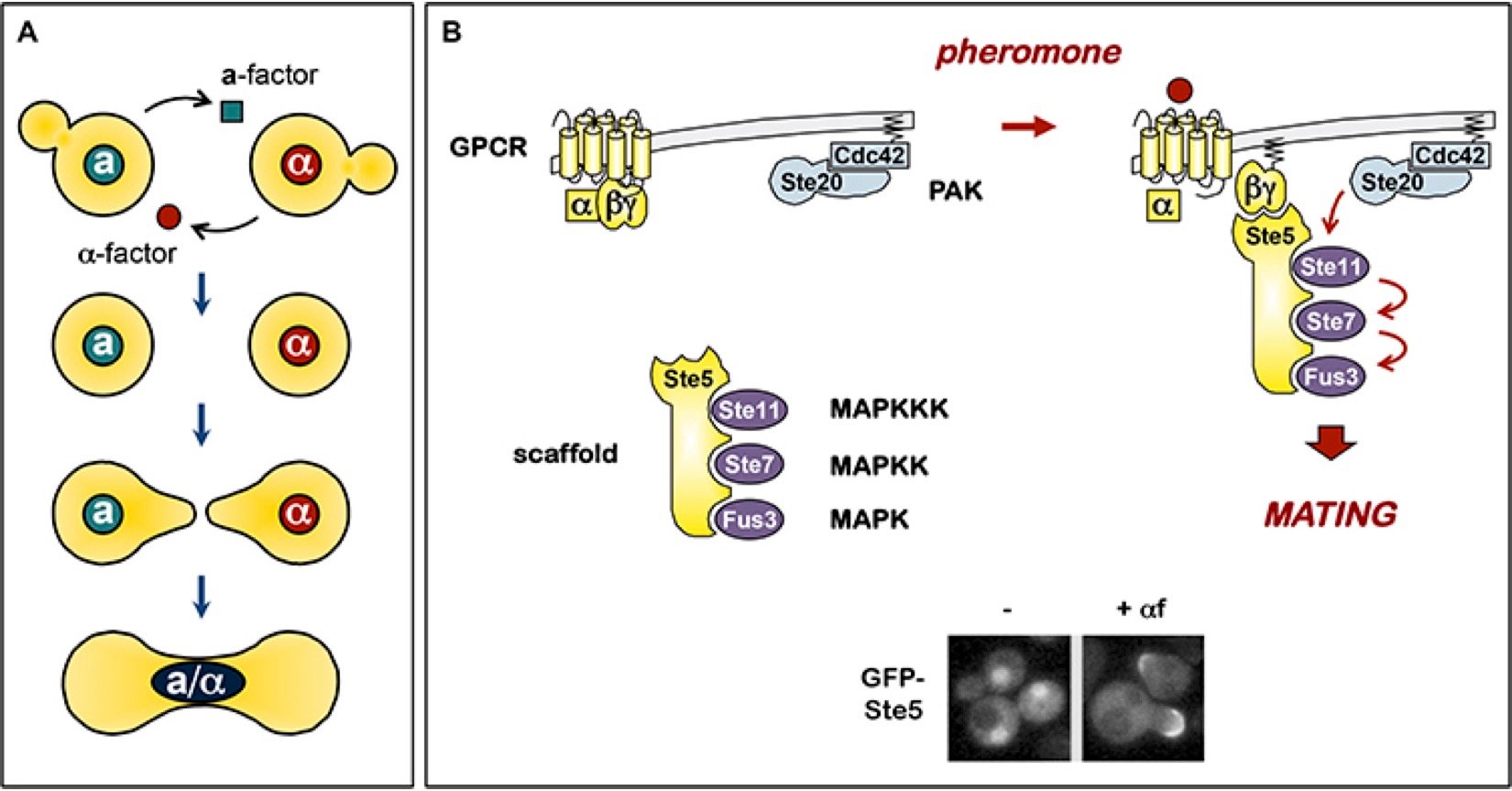Overview
Signaling responses to yeast mating pheromones involve the dynamic assembly of a membrane-localized complex, nucleated by membrane recruitment of the MAP kinase cascade scaffold protein, Ste5. This recruitment event requires the concerted action of protein-protein and protein-membrane interactions. The functional benefits of this cooperative arrangement are one area of continuing exploration. Next, at the start of a new cell cycle, Ste5 recruitment is inhibited by CDK phosphorylation. Our recent findings reveal unexpected factors underlying this CDK control, including previously unknown recognition motifs that guide specific forms of cyclin-CDK to their substrates. These recent discoveries propel new projects on how CDK phosphorylation networks are defined by cyclin-substrate docking interactions.


